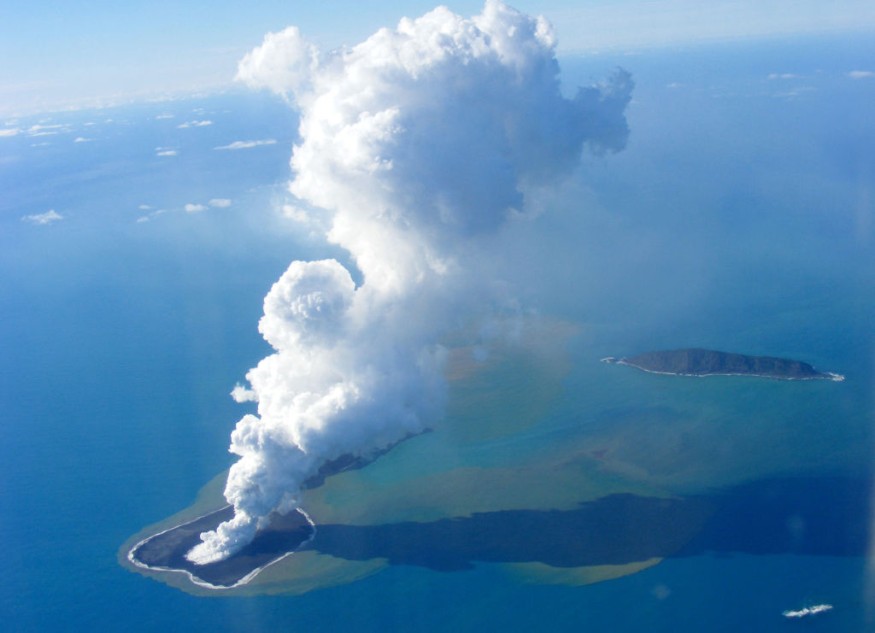Recent research, titled "Lightning Rings and Gravity Waves: Insights Into the Giant Eruption Plume From Tonga's Hunga Volcano on 15 January 2022" published in the journal Geophysical Research Letters, revealed that the eruption of the Hunga Tonga-Hunga Ha'apai Volcano on January 15, 2022, resulted in the highest recorded rates of lightning flashes ever observed on Earth, surpassing any previously documented storms.

Hunga Tonga Volcano Eruption Produces 2,600 Lightning Flashes Per Minute
Sonja Behnke, an atmospheric physicist from Los Alamos National Laboratory, said that the eruption of Hunga Volcano was the most significant volcanic explosion since Krakatau in 1883. This type of eruption, known as phreatoplinian, occurs when a large amount of magma erupts through water.
While this eruption style had previously only been identified in the geological record, it had never been directly witnessed with modern instruments, as noted in a news statement from the American Geophysical Union via EurekAlert!
The eruption of Hunga Volcano in Tonga last year set new records with its "supercharged" thunderstorm and intense lightning activity, SciTech Daily reported. Scientists observed nearly 200,000 lightning flashes within the volcanic plume throughout the eruption, reaching a peak rate of over 2,600 flashes per minute.
This eruption, which lasted for at least 11 hours, showcased the highest-altitude lightning flashes ever recorded, occurring 20 to 30 kilometers above sea level. The lightning acted as a valuable tool for researchers to gain insights into the eruption's timeline, as it allowed them to peer into the ash cloud and uncover previously unknown phases of the event.
The towering plume, rising to a height of at least 58 kilometers, provided crucial information about the magnitude of the eruption. However, it also obstructed satellite views of the vent, making it challenging to track changes in the eruption's progression.
Nevertheless, the lightning data collected during the eruption proved to be an effective means of monitoring volcanic activity and informing ash hazard advisories for aircraft, as highlighted by Alexa Van Eaton, a volcanologist from the United States Geological Survey who led the study.
READ ALSO : Hunga-Tonga Eruption: Strongest Volcanic Explosion of the Modern Era Based on Magnitude, Speed
How Did the Lightning Flashes Form
When the undersea volcano in Tonga erupted, it produced a massive ash plume that extended much higher than typical thunderstorms. As per Forbes' report, this led to the creation of lightning at stratospheric altitudes, ranging from 12 to 18 miles above the Earth's surface.
These altitudes usually do not support thunderstorm-like lightning due to low air pressure, but the fast-rising volcanic plume may have created local conditions conducive to lightning.
As the plume reached its peak height, it expanded outward, forming an umbrella cloud. This expansion triggered the formation of fast-moving circular ripples called gravity waves, resembling the pattern created when a rock is dropped into a pond.
Within the umbrella cloud, donut-shaped rings of lightning emerged, spanning up to 174 miles in diameter. Although similar phenomena known as "lightning holes" have been observed in thunderstorms, the scale of these lightning rings was unprecedented.
The lightning activity was detected using space-based optical sensors as well as ground-based radio antennas located thousands of miles away. This remote detection of lightning allowed scientists to establish a detailed timeline of the eruption, providing valuable insights into its evolution.
The study highlights the significance of volcanic lightning as a monitoring tool for volcanic activity, especially when satellite observations are hindered by cloud cover.
RELATED ARTICLE: Tonga Volcanic Eruption Obliterated an Island Near It, Along With Life Forms Never Seen Before
Check out more news and information on Volcanoes in Science Times.











